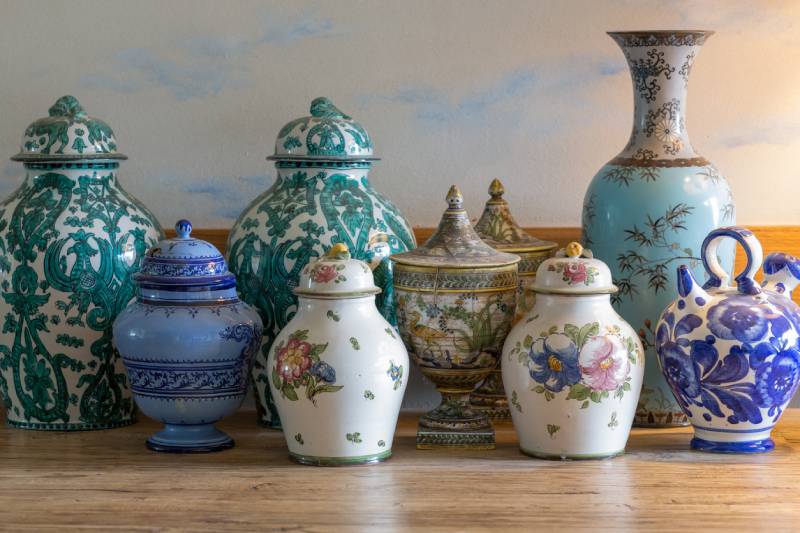Ceramics are always a popular type of antique, but it can be hard to know where to start if you want to begin collecting them or if you're looking for something that is not too expensive. From individual items (like pottery) and full collections, this article has some great advice on how best to identify the ceramics in your collection.
How do you identify vintage ceramics?
As with other types of antiques, ceramics come with marks that help you identify them. However, the range of ceramic and pottery out there is incredibly varied, which means that these markings cover a huge selection as to what they mean for identifying who made them - if anything at all! The Victoria & Albert Museum has created an A-Z guide on how to best determine where your next piece might be from or by whom it was crafted; take their advice before making any purchases so you can get something truly worth collecting!
Ceramics can be identified by a number of factors, including marks. You will need to know the origin and time period as well in order to identify your pieces correctly. The way you identify ceramics is important because it decides what kind of information about its history that you'll have access to - like where they were made or when they started being used.
Ceramics come in many different varieties and are made from a wide range of materials. Some ceramics, such as earthenware, may be coarse or stoneware but others can be delicate porcelain. The weight and translucence of the ceramic item will give you an indication if it is likely to have been made by hand or on a wheel. For example, older pottery would typically indicate that it was created by hand while pieces being cut from wheels tend to be much newer with cleaner lines. If you want to know what type of glaze was used, take a look at the decoration and style. Some potters have styles that are easy to identify while others can be more difficult. You should also check if it has sharp edges or is colorful with lots of detail - all will make identification easier!
How to date ceramics
If you’re looking for a more definitive answer, having your ceramics looked at and valued by an expert is the best option. They will know exactly what to look for in order to identify tell-tale signs that indicate who made it, where it was produced and when its most likely from. If you're an antique collector or seller, this information can be very helpful. An expert is able to provide a rough estimate for the value of your piece and help assess whether it's part of a set or not. This is important information that can help you when building your collection or if you decide to sell your antique ceramic. The value of any given piece depends on a number of factors, so it’s vital not only for collectors but also those who want to liquidate their pieces as well. There are many different types and styles which may affect the price; some will be worth more than others because they have historical significance due to where they were made, what year they were produced in, etc.
Take a look at the following to get an idea of how much vintage ceramics could be worth:
- Even if two ceramic pieces are nearly identical, the one with the designer's mark will always be valued more than the one without. Always look for a maker's mark, as well as a designer or artist mark, as they can indicate popularity, which can influence value.
- Condition is critical, as it is with any antique. Ceramics in good condition can fetch a higher price, but this does not rule out the possibility of damaged ceramics having value. If an item has been well restored, it might add to its value.
- Rare vintage ceramics will always be worth more, and even if they are damaged, they may still be worth a lot.
- Is the item you're selling genuine? In most circumstances, a maker's or designer's mark will indicate that the item is genuine. However, since forgeries sometimes occur, you must ensure that your item is genuine.
- The popularity of ceramic types and creators fluctuates, affecting their value. This means that things that are currently less popular may become more popular in the future, making them an excellent investment.
Getting your ceramics appraised is a smart idea if you want to sell them or insure them. This will offer you an estimate of their worth as well as more information about their origins. An appraisal can also provide you with more information about other works by the same creator that you might wish to add to your collection, perhaps increasing the value of your ceramics in the long run.






